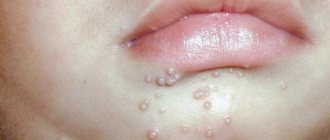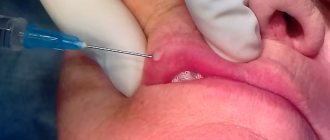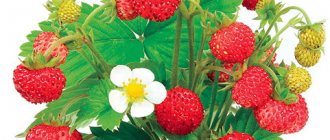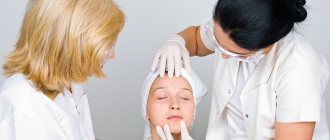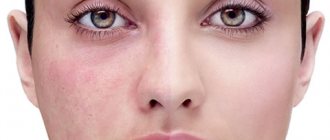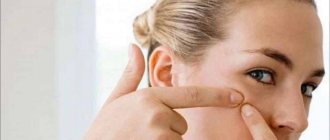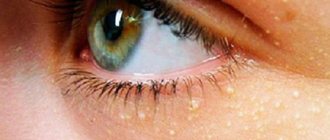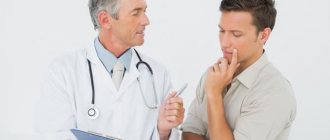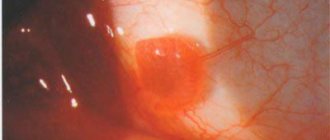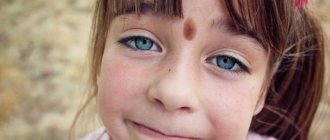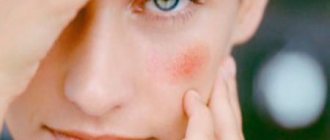Types of lichen in humans
Before starting therapeutic measures and using medications that only a doctor can prescribe, you need to find out what type of disease is occurring. They differ in appearance, symptoms, course and are treated differently. The main types of lichen include:
- Red flat. Often this pathology appears on the lips, oral mucosa, and facial skin. This type of disease looks like gray, pale pink tubercles, which over time can transform into ulcers. The shape of the sores resembles warts.
- Pityriasis (color) dermatitis refers to fungal lichen infections. A sign of the disease is pink-brown spots with uneven but clear boundaries. If you scratch such a lesion on the cheek or other area of the face, the spots begin to peel.
- Ringworm (trichophytia) is also caused by a fungus. As a rule, it forms on the chin and areas bordering the hair. The disease manifests itself as pinkish spots of uneven shape, in the middle of which a crust appears after a while. Trichophytosis causes psychological discomfort and slight itching.
- Psoriasis (lichen planus) appears as small red nodules (papules). They gradually increase in size and then form plaques with scales. If it has an advanced form, then the spots begin to crack, bleed, and cause severe itching and pain.
- Pink – refers to viral illnesses. It is difficult to diagnose because it resembles an allergic rash. Symptoms: spots with blurred borders of a pale pink color begin to appear, itching, burning, and peeling appear. The appearance of sores under the eye, on the cheeks, nose, forehead can also be accompanied by an increase in body temperature and general malaise of the patient.
Pathogens
Ringworm on the face is caused by fungal infections and herpes-like viruses.
There are three main types of parasitic fungi:
- Anthropophilic. Such fungi spread only on human skin. They are transmitted from an infected person to a healthy person through contact and household contact.
- Zooanthropophilic. The fungal infection lives on the skin and fur of domestic animals and is transmitted from them to the owner (or from a sick person).
- Geophilic. Lives in the soil. Defeat occurs when the rules of personal hygiene are insufficiently observed.
This whole “company” of pathogens is located in the body of children and adults without causing harm, but in order to cause lichen on the face they need a certain “push”.
Causes of the disease
Ringworm is an infectious disease accompanied by the appearance of rashes of different sizes, shapes, and colors on the skin. It is characterized by a severe course with frequent relapses.
Ringworm on the face almost always occurs as a result of human contact with stray animals. However, there are other provoking factors that can lead to pathology:
- frequent stressful situations associated with a person’s professional activity;
- weakened immunity as a result of frequent viral pathologies;
- unbalanced diet with insufficient amounts of vitamins and minerals;
- pathologies of the nervous system, for example, acute neuroses, prolonged depression, disorders of the psycho-emotional state;
- regular overwork, lack of daily routine;
- chronic diseases of the digestive system: gastritis, colitis, enteritis, peptic ulcer;
- activation of herpes;
- viral and fungal skin lesions;
- multiple insect bites and infection in wounds;
- dermatitis;
- advanced parasitic infections;
- tendency to allergic manifestations.
The pathology is infectious, therefore it is transmitted not only from animals, but also from person to person through contact and household contact.
How to treat lichen on the face
Treatment of any type of lichen on the face involves both getting rid of the cause of the disease and the symptoms.
General measures for the treatment of all types of lichen can be considered:
- antifungal and antiviral drugs;
- antibiotics (erythromycin, penicillin, ampicillin, gentomycin, tetracycline);
- vitamins (groups B, A, D, C and E);
- antiallergic (tablets - tavegil, suprastin, loratadine, diazolin);
- hormonal (ointments - flucinar, lorinden, sinalar, prednisolone, betamethasone, polcortolone, oxycort).
Private treatment methods are presented in the table:
| Disease | Drug and method of administration |
| Shearing superficial | If eyelashes and eyebrows are affected, they need to be plucked. Then an alcohol solution of 0.2% brilliant green (brilliant green) is carefully distributed along the edge of the eyelid. Then an ointment, cream or spray is applied, the main component of which is intraconazole (orungal, itracon) and terbinafine (lamisil, exifin) (for a month and a half). In complicated cases, griseofulvin is prescribed in tablets at the rate of 22 mg per kilogram of body weight. |
| Pink | Here you need acyclovir (200 mg 5 times a day), which is taken orally for 5 days (all except one-year-old children). Salicylic ointment is effective for treating lesions (twice a day). A combination of sulfur ointment and pharmaceutical birch tar, a teaspoon of each (morning and evening), will relieve inflammation. |
| Red flat | Absolutely necessary: hormonal ointments applied two to three times a day (reaferon), vascular preparations (tablets - xanthinol, trental), sedatives in tablets (diazepam), regenerating (solcoseryl ointment), exfoliating (belosalik), antibiotics. Physiotherapy has a positive effect: laser, magnetic and PUVA therapy. |
| Pityriasis | Shampoos for washing the body and face - sulsen and nizoral - with simultaneous intake of fluconazole capsules (three times a day), ointments with zinc and salicylic acid are remarkably helpful. |
| Weeping | In this case, lichen is of particular importance in relieving allergy symptoms with the help of intravenous administration of saline. solution with calcium and magnesium preparations, taking activated carbon tablets. In addition, the following are suitable: baths with sea salt and medicinal mud; cryotherapy; paraffin wraps; medicinal teas and herbal baths; laser treatment. |
| girdling | Acyclovir or famciclovir is used according to the instructions (both in injections and tablets) for a week. Be sure to take painkillers - analgin, ibuprofen. |
| Psoriasis | Cytostatics (cyclosporine) and drugs containing vitamin A - retinol, (isotretinoin), anti-inflammatory, antipruritic, antiallergic ointments (flumethasone, triamcinolone) are taken. Diet and physical therapy are of great importance. |
Red flat
Typical places where a bright red rash appears on the face are the skin of the cheeks, chin, near the eyes and on the forehead. Weeping is visible inside the plaques. The course of lichen is accompanied by pain, severe itching (even at night), which leads to constant insomnia. More common in women.
Gradually, the mucous membranes of the oral cavity (cheeks and gums, palate and tongue) are involved in the process, causing additional troubles to the patient.
In children, lichen planus is a rare occurrence. Due to the fact that the loose skin of children contains more water than the body of an adult, and small blood vessels are located closer to the surface of the skin, swelling instantly forms, and the rash takes the form of nodules and purple blisters.
What you need to know about pityriasis alba
One of the varieties of lichen is lichen alba, which also has the definition of “lichen simplex”; it should not be confused with the definition of “lichen simplex”. The course of this disease has not yet been fully studied, so the order of occurrence of symptoms, diagnosis and prescription of effective treatment is always in question. Because of existing stereotypes, many people, upon hearing the diagnosis of “ringworm,” begin to panic, thinking that there is only one type of ringworm (ringworm), but in fact, ringworm is not so aggressive in its development and, in most cases, not requires treatment because it can go away on its own over time.
Lichen simplex (white spots on the skin) is quite common among the population. Most of the people affected by this disease are mainly concerned about the damage to the cosmetic appearance of the body, because simple facial lichen can make you inconvenient in communication as people will start to pay attention and their reactions can be completely different. For the most part, lichen alba affects the lateral surfaces of the cheeks, shoulders, and thighs and manifests itself as absolutely painless white spots that rise above the surface of the skin, have unclear contours and are finely flaky.
Most often, this type of lichen affects the body in childhood (from 3 to 16 years) and in most cases boys, and self-healing occurs closer to adulthood. Simple chronic lichen is not scary, since independent healing that occurs over time is not uncommon. Scientists in their works put forward many different reasons why pityriasis alba appears in humans, but over time, each of them is rejected.
The most common version of the appearance of pityriasis alba at the moment is considered to be the entry into the body of malassezia fungi, which, due to the substance they produce (pityriacitrin), can block the existing access of ultraviolet rays to the skin; in addition, they slow down the process of melanin transfer from melanocytes to keratocytes.
Who is most susceptible to this disease?
Not only can the cause of the appearance of lichen alba not be correctly determined, but the affiliation of lichen simplex to any group of the disease also changes. Initially, it was compared with skin staphylostreptoderma (its erased form), and now the manifestation of this disease is compared with atopic dermatitis.
Figures for the percentage of people affected by pityriasis alba are particularly low, with only about 10 percent of the population struggling with this disease. There is a group of people who are most often susceptible to lichen alba. These include:
- patients with atopic (allergic) dermatitis;
- people predisposed to bronchial asthma, eczema at the genetic level (this situation is an unfavorable background that is inherited from generation to generation);
- patients with hay fever;
- people who are predisposed to eczema or already have its manifestations on their body.
As mentioned earlier, pityriasis alba occurs more often in children under 16 years of age. It is then that it can be called simple chronic lichen, because it can be on the child’s body from 3 years of age until adulthood. In adults, this type of lichen goes away without causing unnecessary worries.
ethnoscience
If you do not want to treat lichen with medications, you can resort to folk remedies, the most popular are:
- Apple vinegar. It is necessary to take the product without dilution and soak some gauze, fabric or cotton wool with it and apply it to the affected area on the body up to 4 times a day. Apple cider vinegar has a positive effect on eliminating itching and pain.
- Celandine. Dry collections (about 100 grams) must be crushed to a homogeneous mass and mixed with cooled boiled water. The resulting mixture must be prepared by boiling for 10-15 minutes. After this, the tincture should be left for about 2 hours. After this period, you need to apply the product to the affected areas on the body 1-3 times a day.
- Ointment at home. To prepare it, you need to take burdock, hops, calendula and mix them in equal quantities. After this, the composition should be poured with 500 ml of water and left for several hours to infuse. The resulting substance should be applied to the rash several times a day. The ointment alleviates the effects of all types of lichen.
Folk remedies
You can alleviate the patient's condition with the help of simple recipes of alternative medicine. Products made from natural ingredients have a positive effect on the skin.
Celery has unique therapeutic properties . A pulp from the rhizome or leaves of the plant helps relieve itching, reduce stains and heal tissue. It is necessary to grind the celery and apply it to the area of the rash for 30 minutes. You can wrap it in gauze to make the procedure easier. Repeat the procedure twice a day until the spots disappear.
Lichen facialis can be very painful, so many patients resort to an old and proven recipe - applying honey to the area of inflammation . It is recommended to take only liquid product without sugar crystals. Lubricate the affected area carefully and leave for 1 hour. Repeat daily for a week. The recipe is not used in the treatment of patients with allergies to bee products.
If stains appear on the chin, forehead and cheeks, you can use tar soap to help get rid of the problem in a few days. Birch tar has unique antiseptic, antifungal and anti-inflammatory properties. You should treat the lesions daily with soap, leave for 10 seconds and rinse with warm water. If your skin is very sensitive, you should use a moisturizer after the procedure.
A decoction based on celandine is a powerful natural remedy with an antiseptic and antimicrobial effect. You can prepare the medicine from 3 tablespoons of pre-dried herb and 0.5 liters of water, cook for several minutes, leave for 2 hours. Filter the composition, treat the affected areas with it 3 times a day or apply it in the evening as a compress for 20 minutes. Continue treatment until the spots disappear.
Natural apple cider vinegar will help get rid of itching and severe burning in the area of the rash. You should only take a high-quality product, but not an essence. The stains need to be treated with the product twice a day for a week. If necessary, the course can be extended for several days.
It is recommended to use traditional recipes after visiting a dermatologist and establishing an accurate diagnosis.
girdling
The cause of the disease is the herpes zoster virus, which causes chickenpox. The second name for “sores” is herpes zoster. This is one of the most painful lichens and greatly worsens the overall well-being.
A small reddish rash, similar to chickenpox, spreads all over the body (including the face). The resulting itchy blisters with liquid inside measuring 0.3-0.5 cm burst and turn into crusts. Against the background of the rash, the temperature rises, chills, severe headache, and swelling appears. It hurts to touch the body. The disease is characterized by a long course.
With complications, this lichen leads to severe inflammatory processes in the internal organs.
In children, herpes zoster on the face affects not only the skin, but also organs innervated by the trigeminal nerve. Lymph nodes enlarge.
What causes lichen on the face:
- contact with street animals through fur or through household contact from person to person;
- weakened immune system;
- severe stress or diseases of the central nervous system;
- predisposition to an allergic reaction;
- insect bites;
- helminthic infestations;
- inappropriate care for oily skin and excessive sweating;
- gastrointestinal tract disorders;
- genetic continuity (the main source of shingles).
Prevention
Some believe that this disease can only affect the scalp, so all preventive measures are carried out exclusively relative to it. But now you know whether there can be lichen on the face: not only can it, but it is also very dangerous. In order not to encounter this infection, dermatologists advise regularly monitoring the prevention of this disease:
- minimize contact with unfamiliar animals (especially cats and dogs);
- increase immunity by any means;
- avoid prolonged and prolonged stress;
- treat all emerging diseases of the nervous system;
- avoid contact with allergens;
- take a course of multivitamins twice a year;
- prevent colds;
- try to avoid insect bites, and if this happens, immediately treat the affected areas with antiseptics;
- learn how to properly care for oily skin;
- use medications for excessive sweating;
- after chickenpox, monitor the level of endorphins in the body;
- undergo regular cancer screenings;
- treat helminthic infestations;
- eliminate digestive problems.
Ringworm on the face is a very unpleasant disease, the treatment of which is associated with many problems. These are the duration of the course of therapy, pain as the main symptom, a high risk of complications, internal complexes regarding the appearance spoiled by rashes. The rehabilitation period should include the restoration of not only the physical strength of the body, but also the moral one.
Classification of pathology
Experts distinguish several types of the disease depending on the shape, size, appearance of the rash, color and nature of the process. The following types of pathology are considered the most common:
- Pityriasis rosea on the face looks like a small spot with clear boundaries and an uneven surface. There are no bubbles on it, peeling of the skin is observed at the edges. The spots usually do not exceed 2 cm in diameter, but as the disease progresses, their number increases. Some experts say that this type of disease does not require special treatment and goes away on its own within a few weeks.
- Lichen planus is a chronic disease. It causes pink spots with a glossy surface to appear on the skin.
- The ringworm type most often affects the scalp and beard in men, sometimes appears on the body, and is usually transmitted from animals. Needs complex treatment.
- Shingles does not appear on the face, since it mainly affects the torso and sometimes the limbs. It develops as a result of the activation of the herpes virus, which infects more than 70% of the world's population.
- Pityriasis versicolor is also called versicolor because the rash can be not only pink or red, but also brown, bluish and yellowish.
There are other types of lichen, for example, weeping and scaly, but they are not infectious diseases.
Types and symptoms of lichen
There are 5 types of lichen in total, and they all differ in their symptoms, possible complications and places of occurrence of the affected areas:
- Color. This type belongs to fungal lichen diseases. The main symptoms are the appearance of dark pink spots on the body, which, when mechanically damaged, begin to peel off with white scales. Most often it occurs on the face and limbs.
- Flat red. This species is often found on the human mucosa, lips and face. Visually, it looks like pale warts; if timely treatment is not started, they can burst and become ulcers.
- Pink. This type belongs to the group of viral lichen; its occurrence is difficult to determine and diagnose due to its external similarity to an allergic reaction. The main symptoms of the disease are: a small red-pink rash, redness of the affected areas, severe itching, burning and discomfort. Most often, pityriasis rosea occurs on the face in the area of the eyes, nose and forehead.
- Shearer. A fungal subspecies that most often appears in areas of hair on the body (head, chin, intimate area). The affected areas become covered with light pink spots of various shapes, and over time a crust forms in their place. These areas are very itchy and cause a lot of discomfort; hair loss also occurs in this area.
- Scaly. When this type of lichen appears, small red papules appear on the body, which can subsequently develop into large plaques. If treatment is not started in a timely manner, these areas may begin to become rough, dry out, crack and bleed. In this case, the whole process is accompanied by severe pain and itching. Lichen planus can appear anywhere on the body.
Symptoms
To know how to treat lichen, you need to know a little about its type. The rash may vary, but the disease will be the same. Signs of various types of disease:
- Microsporia usually covers the borderline part of the skin with hair, so the area usually includes the sides and neck. Many pink-red spots form on the face, with a characteristic edging and peeling in the center. Sometimes these spots can be itchy.
- Lichen planus manifests itself on the mucous membranes, so it most often occurs on the lips and throughout the oral cavity. Its symptoms are growths of light pink, gray, and sometimes violet-bluish shades. Under the influence of various factors they can turn into ulcers. In shape it can be ring-shaped, erythematous, somewhat similar to a wart.
- Ringworm usually occurs on the scalp and chin. These are wavy pink spots with an irregular contour. In the center you can notice the formation of gray-yellow crusts or plaques. The outline is white and often itches. Primary symptoms occur after contact with an infected pet or person.
- Pityriasis versicolor appears as brownish-pink spots with clear boundaries that appear after itching, scratching and peeling.
- Pityriasis rosea covers the entire body, and if it begins to spread to the face, it is difficult to recognize. It is often mistaken for an allergy. The spots are pink with a fuzzy border, and at the same time there is very strong itching, which creates great discomfort. Additional symptoms include fever and lethargy.
- Weeping is accompanied by a large number of small bubbles, which subsequently burst and release exudate, forming erosion. This form is characterized by severe itching, burning and causes great discomfort.
- Shingles has a number of primary symptoms that are difficult to confuse with others: fever, pain on the skin, poor general condition. What does this kind of lichen look like: these are blisters, from which the face swells, of a soft red color with the formation of hard flaky crusts.
- Psoriasis is small red pimples on the face, which soon increase in size, forming into shiny plaques that itch very much and cause discomfort.
Important! All these signs are very similar to each other, so really, only a dermatologist can determine what lichen looks like and what type it is.
Salicylic acid
Salicylic acid can be a good remedy against unsightly itchy rashes on the face. Typically, this type of therapy helps get rid of lichen planus in three to four days. Regular aspirin tablets are used as follows:
- the pills are crushed to a powdery state;
- mix with alcohol (40 degrees) until a homogeneous paste is formed;
- The resulting solution is applied to the skin affected by lichen and sealed with a band-aid.
Symptoms of lichen in humans
A group of dermatological diseases, which is manifested by the formation of rashes, papules, pigment spots with peeling on the skin, is lichen. This type of ailment refers to infections caused by fungi and viruses. Inflammation in a person’s face, head, arms, legs, chest or throughout the body is often transmitted through household contact. The disease has many varieties with characteristic signs, but there are also common symptoms (shown in the photo):
- increased body temperature;
- skin rashes, severe itching;
- tissue redness;
- peeling of the skin;
- enlarged lymph nodes may occur;
- general significant malaise, weakness.
Do I need to see a doctor?
As already mentioned, the causes of the disease currently remain poorly understood. However, this does not mean that pathology can be neglected. If characteristic skin rashes appear, it is better to show the baby to a doctor.
After a specialist confirms the disease, you can begin treatment at home. If the spots are not a manifestation of pityriasis alba, additional examination will be required to determine the cause of their occurrence. A similar clinical picture occurs, for example, in vitiligo. In this case, a completely different treatment is prescribed.
As a rule, to confirm the diagnosis of pityriasis alba, it is enough for the doctor to conduct a physical examination of the patient and check the skin using a Wood's lamp. This is a special device that produces ultraviolet light. When a routine examination is not enough to confirm the disease, the patient is prescribed an additional examination. It includes a biopsy and histological analysis of the skin.
How is the pathology treated?
The lichen gradually develops, spreading to more and more new areas, but after 4-6 weeks it goes away on its own. This often happens when the immune system is strengthened. If the body's defenses are weakened, the disease lasts for several months.
There is no need to self-medicate for skin lesions. It may not just be lichen, but a more serious illness (rubella, measles). A consultation with a dermatologist is required; after determining the cause, treatment is prescribed depending on the diagnosis. Infectious-allergic lichen can only be resisted by complex therapy.
Doctors advise:
- Taking antihistamines;
- Using ointments against dermatitis;
- Applying tar ointments;
- Taking antibiotics.
If Gibert's disease is accompanied by severe itching, the doctor will recommend allergy medications or activated charcoal, which helps absorb toxins.
Ringworm on the face, the types of which have some differences, is characterized by many common symptoms - maternal plaque, peeling, and rapid spread over the skin of the face. During treatment, glucocorticoids (Flucinar, Lorinden, Sinalar) are used as ointments.
The products are applied to the area of red spots, which after a few days of use will become paler, roughness disappears, and scales flake off. Self-treatment with hormonal drugs can cause irreparable damage, so a doctor's advice is preferable.
Lichen Zhibera responds well to treatment with antiviral agents, for example, Acyclovir ointment. Treatment lasts from a week to 2, but the inconvenience of use is the need for frequent application to pink spots - up to five times a day.
Products containing zinc (zinc ointment, Lassara paste) can be applied to the area where lichen spreads. They relieve irritation, dry out rashes, and have an antibacterial effect.
It is possible to use different talkers based on streptocide or antibiotics (chloramphenicol). But they should only be prepared in a pharmacy.
Treatment of white lichen
It is necessary to treat pityriasis alba if a person has:
- extensive distribution of spots on the skin of the body;
- deprivation on the face and open areas of the arms and legs;
- spots of white lichen against the background of acute dermatosis, which worsens the well-being of a child or adult;
- associated secondary infection and scratching, accompanied by constant itching.
Lichen alba should be treated topically with creams, ointments and solutions to restore normal pigment and disappearance of small white spots or one large spot on the skin of a child, teenager or adult.
The main drug for eliminating depigmentation on the face and body skin is Hydrocortisone ointment (1%). Treatment is also carried out with traditional medicine.
Features of treatment in children
Lichen alba in a child can be removed by correcting skin care.
To do this, it is recommended that the child:
- wash with slightly warmed water without using soap;
- take a warm bath using mild soap with glycerin;
- systematically use cream and ointment to moisturize the skin;
- Apply products that protect the skin from the sun when sunbathing on the beach;
- eliminate pityriasis alba using treatment with ointments and creams based on corticosteroid hormones.
Treatment with ointments (creams) containing Pimecrolimus (Elidel), Taclolimus (Protopic) or Calcitriol will alleviate the condition of a child with lichen alba due to an allergic reaction and atopic dermatitis.
